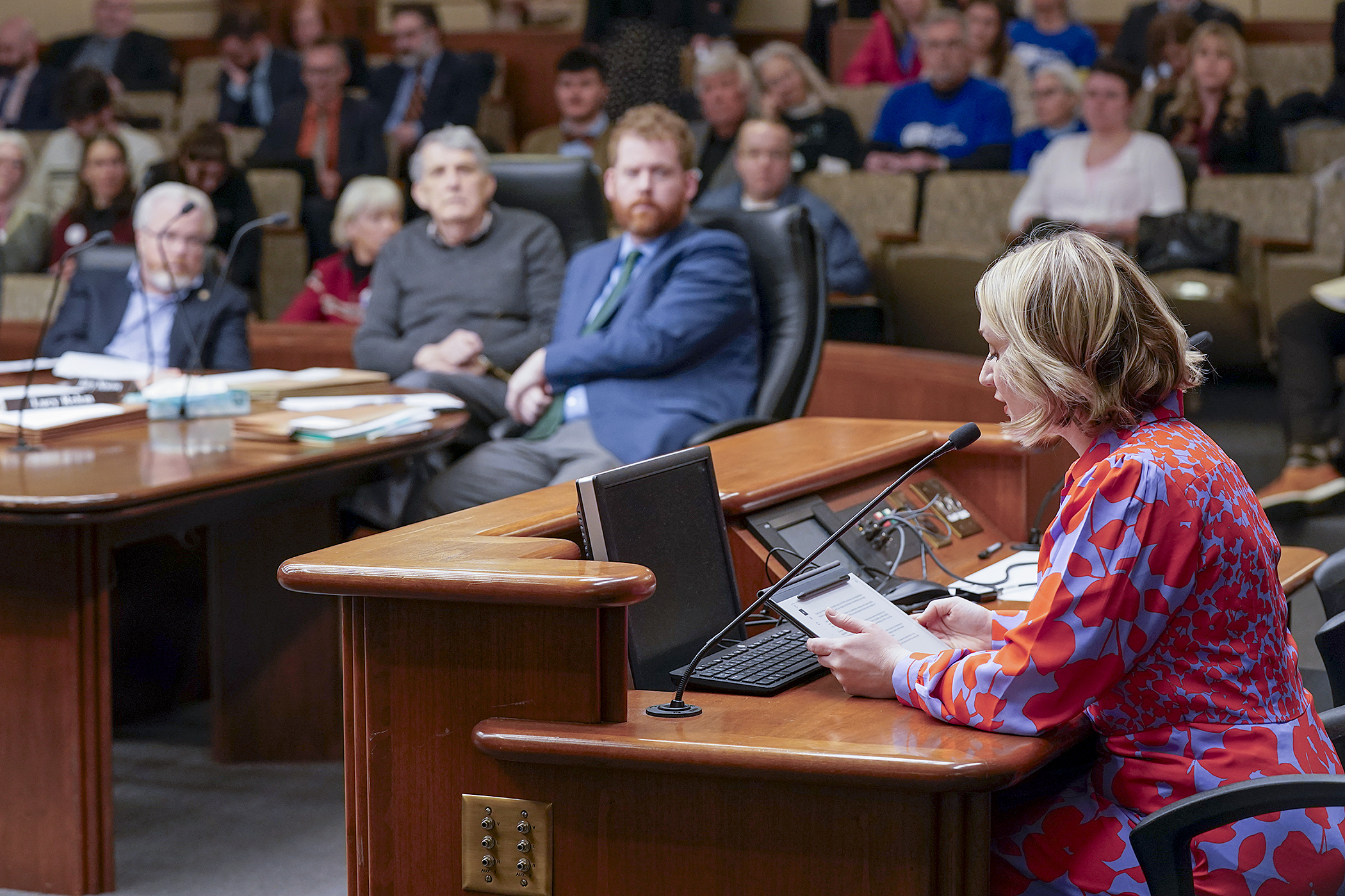Supporters say permitting reform marks Minnesota’s next step in clean energy transition

Call it 100% clean energy 2.0.
That’s how House Majority Leader Jamie Long (DFL-Mpls) views HF4700, a bill he’s dubbed the Minnesota Energy Infrastructure Permitting Act. Now that the state has committed to using exclusively carbon-free sources for electricity by the year 2040, Long believes it’s time to hit the accelerator on getting clean energy projects onto the electric grid.
And that will require a considerably swifter permitting process.
On Wednesday, the bill, as amended, was laid over by the House Climate and Energy Finance and Policy Committee for possible inclusion in a larger climate and energy bill.
“Right now, our transmission grid is constrained, which means that it is often prohibitively expensive for new renewable energy projects to interconnect,” Long said. “We’re also seeing projections of increased energy demand from data centers and electrification.
“Recognizing these needs in 2022, the Midcontinent Independent System Operator, or MISO, approved the first phase of its long-range transmission planning projects. At $10 billion, tranche one is the largest transmission expansion in U.S. history, [including] three new lines proposed in Minnesota at $2 billion in value.
“At 10 years on average, it takes us too long to build transmission,” Long added. “With business as usual, projects starting the process next year won’t be online until 2035, just five years before we have committed the state to 100% clean energy. We can absolutely do better than 10 years and must.”
Long said the bill is the product of a work group with 31 stakeholders assembled by the Public Utilities Commission, and that it includes that group’s top 12 recommendations for streamlining the permitting process.
 Aurora Vautrin, political director for the 100% Campaign, testifies March 20 before the House climate and energy committee in support of HF4700. It would establish the Minnesota Energy Infrastructure Permitting Act. (Photo by Michele Jokinen)
Aurora Vautrin, political director for the 100% Campaign, testifies March 20 before the House climate and energy committee in support of HF4700. It would establish the Minnesota Energy Infrastructure Permitting Act. (Photo by Michele Jokinen)Among other items, the bill would triple the voltage and length of a high-voltage transmission line to have it be defined as a “large energy facility.” Within that category, it would provide exemptions for projects of a certain size involving solar, wind or battery storage, and any intended to fulfill the renewable energy or carbon-free standard.
It would also shorten the deadlines for transmission line owners, streamline the process for designating sites and routes, and lay out procedures for determining what review processes are applicable for a project. Other measures would be designed to streamline the processes for environmental assessment and amending permits with minor alterations.
Rep. Spencer Igo (R-Wabana Township) lamented that a $2 billion project left his district because of permitting issues, and both he and Rep. Ben Davis (R-Merrifield) expressed hope that Long would also consider permitting reform for mining projects.
The committee chair, Rep. Patty Acomb (DFL-Minnetonka), said the bill may establish a model for permitting reform in other areas.
Related Articles
Search Session Daily
Advanced Search OptionsPriority Dailies
Speaker Emerita Melissa Hortman, husband killed in attack
By HPIS Staff House Speaker Emerita Melissa Hortman (DFL-Brooklyn Park) and her husband, Mark, were fatally shot in their home early Saturday morning.
Gov. Tim Walz announced the news dur...
House Speaker Emerita Melissa Hortman (DFL-Brooklyn Park) and her husband, Mark, were fatally shot in their home early Saturday morning.
Gov. Tim Walz announced the news dur...
Lawmakers deliver budget bills to governor's desk in one-day special session
By Mike Cook About that talk of needing all 21 hours left in a legislative day to complete a special session?
House members were more than up to the challenge Monday. Beginning at 10 a.m...
About that talk of needing all 21 hours left in a legislative day to complete a special session?
House members were more than up to the challenge Monday. Beginning at 10 a.m...